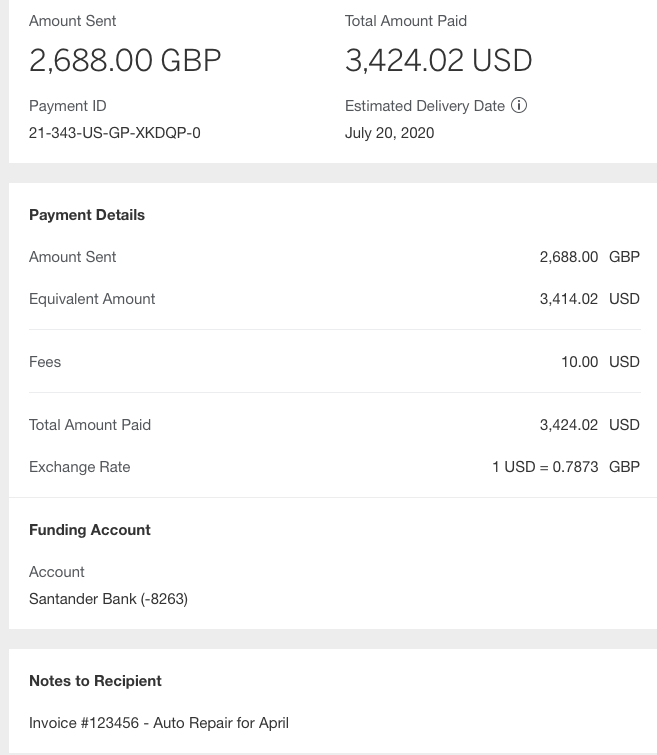How B2B Payment Solutions Can Ensure Timely Payments for SMBs

Late payments can be a serious headache for small and medium-sized businesses (SMBs). In the world of B2B transactions, even minor delays in paying suppliers can quickly turn into costly penalties, damaged relationships, and long-term trust issues. For SMBs, where margins can be tight, these disruptions can directly affect their bottom line.
Payment delays often aren’t a sign of irresponsibility. In many cases, they’re a result of inefficient, poorly designed payment systems that aren’t built with SMBs in mind. Complex user interfaces, hidden fees, and confusing reconciliation processes all contribute to the problem. The good news? These issues are preventable with a focus on better user experience (UX) in payment solutions.
Let’s dive into how B2B payment solutions can help SMBs avoid late fees, resolve payment discrepancies, and maintain healthy relationships with suppliers, using insights from our UX research.
The Real Impact of Payment Delays on SMB-Supplier Relationships
To understand how late payments impact SMBs, consider this scenario: An independent cheesemaker in the U.S. needs to pay her suppliers in Europe for a regular shipment of specialty cheeses. Her payments typically range from $500 to $5,000. She’s running a lean operation with just a few employees, and every dollar counts.
When she misses a payment deadline due to platform difficulties or confusion over bank fees, her suppliers add late fees to her invoice. After a few instances, she risks damaging her relationship with them.
Suppliers may view her business as unreliable and impose stricter terms, such as requiring upfront payments or reducing the availability of credit. This makes it even harder for her business to grow and thrive.
It’s not just about the penalties. Late payments can disrupt the entire supply chain. A supplier who doesn’t get paid on time might delay future shipments, causing stock shortages for the SMB and, ultimately, affecting the end customer experience. For small businesses, this chain reaction can be disastrous, leading to lost sales and reputational damage.
So what’s the solution? Payment solutions with better UX, designed to meet the specific needs of SMBs, can help prevent these costly delays.
Claire's Cheese Store
Let’s take a closer look at Claire, the owner of a small cheese store in the U.S. Claire’s business is a simple setup—she has a few employees and a small, but loyal customer base. She imports specialty cheeses from several suppliers in France and other parts of Europe. Each month, Claire needs to send payments to these suppliers, typically ranging from $500 to $5,000.
Claire is frustrated by her bank’s difficult-to-use platform because payments are not always as simple as they should be. On several occasions, Claire’s suppliers have penalized her for insufficient payments due to fees deducted from the invoice amount.
She finds it hard to track payments and reconcile differences between what she intended to pay and what her suppliers received.
Her frustrations are not unique. Many SMBs face similar struggles when navigating poorly designed payment systems. Insights from our work with several payment platforms over the years confirm this recurring frustration among SMBs.
SMB owners like Claire need a simple, reliable solution that allows them to make payments quickly, track previous transactions, and ensure that their suppliers are paid in full without surprise hidden fees.
This is where UX-centered B2B payment systems can truly make a difference.
How Better Payment Tracking and Automated Reminders Can Help SMBs Avoid Penalties
One of the key pain points for SMBs like Claire’s cheese store is the lack of transparency and ease of tracking payments. Many small business owners don’t have dedicated finance teams—they handle everything themselves, from managing orders to paying suppliers. This often leads to missed payments because the systems they’re using don’t provide clear reminders or simple ways to track due dates.
In Claire’s case, her bank’s payment platform didn’t make it easy for her to know when payments were due or whether previous payments were processed correctly. This is where automated reminders could have helped.
B2B payment solutions need to offer a seamless way for SMBs to see upcoming payments, receive reminders in advance, and make it easy to act on those reminders.
Ideally, these reminders should not just pop up in a cluttered email inbox—they should appear within an intuitive dashboard or via notifications that the business owner can quickly understand and act on.
The reminders should include clear payment options to make sure the process from reminder to payment completion is smooth, with minimal steps involved.
The Need for Easy-to-Understand Payment Reconciliation Features
Another issue Claire faced was reconciling payments with her suppliers. She would often send payments, but after bank fees and currency conversions, the amount that landed in her suppliers’ accounts was less than what was invoiced. As a result, her suppliers would penalize her, claiming insufficient payment.

This problem is particularly common in cross-border transactions, where hidden fees and charges can reduce the actual amount a supplier receives. SMBs need payment systems that are transparent about these fees upfront and that make reconciliation easy.
In Claire’s case, if her payment system had included real-time reconciliation features, it could have flagged the discrepancies between the amount sent and the amount received, giving her an opportunity to correct the issue before any penalties were imposed.
A well-designed payment system would also allow Claire to track her past payments and view any differences between invoiced amounts and amounts paid after fees, all in one place.
Reconciliation tools should be simple and easy to access. Instead of requiring SMB owners to manually match invoices to payments, these systems should automatically compare what was paid with what was owed and provide a clear, actionable summary.
How UX Can Address the Problem of Insufficient Payments Due to Bank Fees
One of Claire’s biggest frustrations was dealing with insufficient payments caused by bank fees. She would make a payment, but her supplier would receive less than expected due to deductions. These shortfalls would often lead to penalties, which is a common pain point for many SMBs making international payments.
A well-designed B2B payment solution can solve this problem by offering transparency around fees at the time of payment. Claire, for instance, should be able to see exactly how much the supplier will receive after all fees and deductions are taken into account. This kind of visibility allows SMB owners to adjust the payment amount accordingly and avoid any unpleasant surprises.
Moreover, payment systems should flag insufficient payments immediately. If the amount sent isn’t enough to cover the invoice due to fees, the system should notify the user and offer the option to correct the shortfall before the payment is finalized. This prevents late fees and protects the relationship with the supplier.
Key Takeaways for Payment Leaders
- Payment Delays Hurt Relationships: SMBs like Claire’s cheese store rely on maintaining good relationships with suppliers, but payment delays can erode that trust. Payment systems need to offer intuitive tracking and reminder features to help SMBs avoid late payments and the penalties that come with them.
- Automated Reminders Are Critical: SMBs don’t have the time or resources to manually track every payment. B2B payment solutions should include automated, easy-to-understand reminders that prompt SMBs to make timely payments without hassle.
- Simplify Reconciliation: Many SMBs struggle with reconciling payments, especially when bank fees and deductions come into play. Payment systems should offer real-time reconciliation tools that automatically detect discrepancies and help businesses resolve them quickly.
- Fee Transparency Prevents Insufficient Payments: Insufficient payments due to hidden fees are a common issue in cross-border transactions. B2B payment systems need to clearly show all fees upfront so that SMBs can adjust payments and avoid penalties.
Make UX your competitive advantage
Late payments and penalties don’t have to be an inevitable part of doing business for SMBs. By focusing on better user experience in B2B payment systems, financial institutions can help SMBs like Claire’s cheese store avoid unnecessary fees, improve their supplier relationships, and run their businesses more efficiently.
Work with WDIR, the leading UX agency that specializes in B2B payments. We partner up with leading financial institutions and innovative fintechs globally to create seamless, secure, and intuitive payment experiences. Get in touch today!
